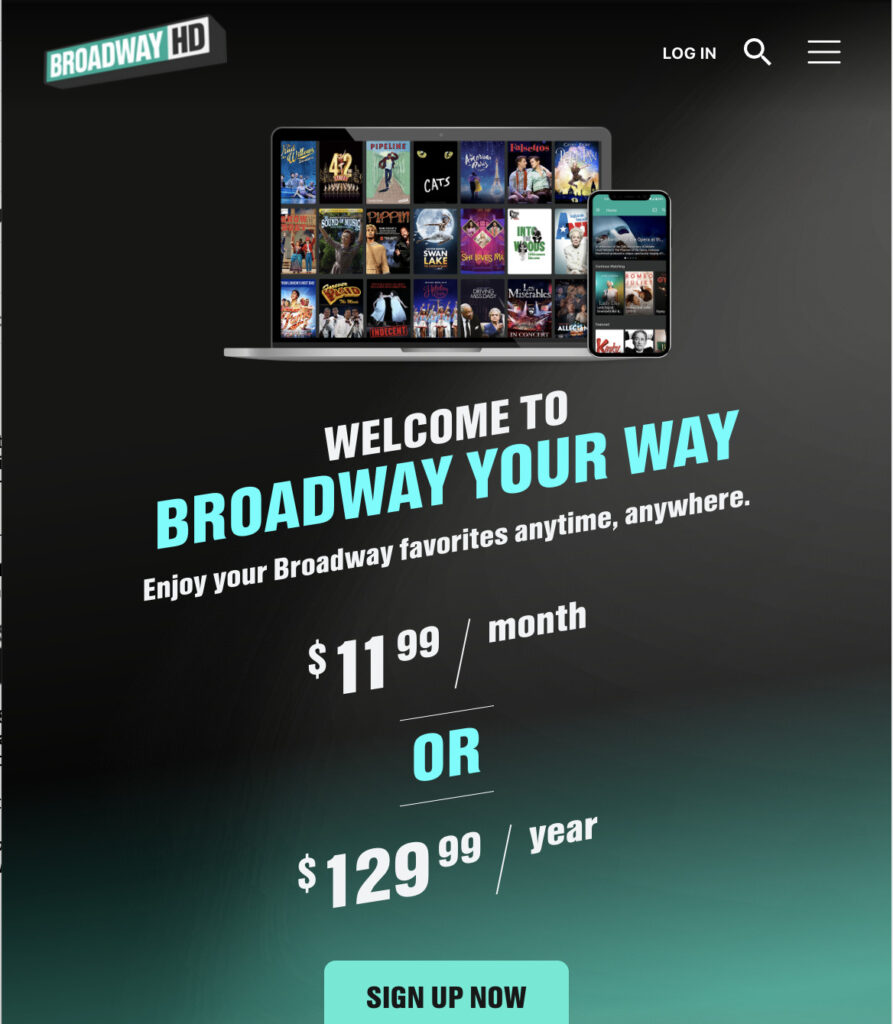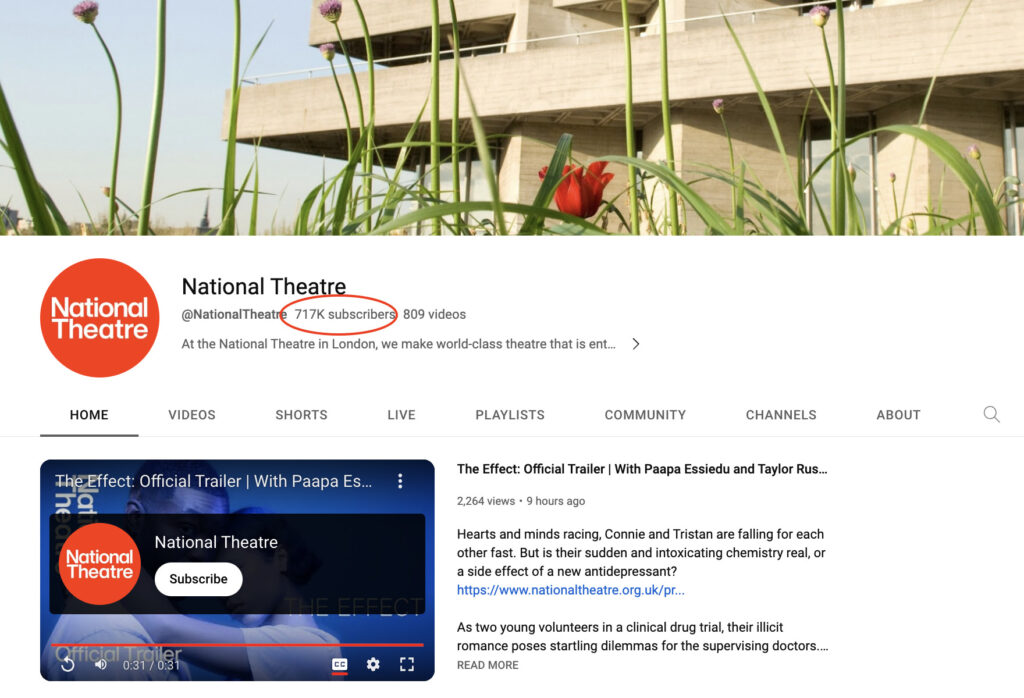Digital Business Models in Performing Arts – Part 4: Unlocking the Potential of Digital Platforms
In the final blog of this Arts & Technology series, we explore digital platforms and look into how performing artists and organizations can harness their power for value creation through the deployment of the ‘Digital Hub’ and ‘Streamer’ business models (See Blog 1: Introduction).
Digital platforms come in various forms, and offer opportunities for artists and organizations to expand their reach, engage with new and existing audiences, and create cultural, social, and economic value. The most prevalent type of digital platform used by performing arts organizations is without a doubt social media. Platforms like Facebook, Instagram, and Twitter offer free content creation tools and have become indispensable for marketing performances, communicating with audiences, and building loyal online communities. Video streaming platforms, such as YouTube, have also gained popularity. These platforms allow organizations and individual artists to reach wider audiences by sharing their video content, e.g., videos of performances, rehearsals, interviews, and behind-the-scenes footage. Furthermore, by building a digital community around their channel, artists and organizations can potentially generate revenue through ad monetization, sponsorships, and brand collaborations.
More recently, there has been a rise in specialist digital platforms that are designed for content creators to monetize their digital assets. For instance, performing arts video streaming platforms have provided additional opportunities for the performing arts industry. Platforms like BroadwayHD and Marquee TV specialize in streaming live performances or pre-recorded shows, allowing audiences from around the world to access theatrical experiences from the comfort of their homes. Performing arts organizations can partner with these platforms to distribute their productions globally, and expand their audience base.
Furthermore, Patreon, a popular membership-based platform, provides a direct and sustainable way for artists and organizations to monetize their creative work. By offering tiered subscription levels, artists can cultivate a community of patrons who pledge ongoing support in exchange for exclusive content, behind-the-scenes access, merchandise, or personalized experiences. Teachable, on the other hand, is a versatile online course platform that enables performing artists and organizations to share their knowledge and expertise with a broader audience. Teachable provides the tools to design immersive and interactive learning experiences, complete with video lessons, quizzes, and discussion forums. This not only creates additional revenue streams but also positions artists as authoritative figures in their respective disciplines, fostering a community of learners and enthusiasts around their work.
Although the benefits of having an established presence on third-party digital platforms are undeniable, during and post-pandemic, many performing arts organisations have launched their own digital platforms, ranging from simple e-shops to more complex configurations including different types of digital content, from live-streamed performances to XR content. The deployment of the ‘Digital Hub’ business model, which includes having a bespoke digital platform to distribute their content to audiences, provides performing arts organizations with clarity over the ownership of their digital assets and sole control over the financial transactions involving them. In the following section, we will look at some examples of how performing arts organizations can leverage different types of digital platforms to create and capture value.
Third-party video streaming platforms, such as YouTube, offer great potential to reach a global audience. However, until recently, cultural organisations have rarely managed to fully capitalize on this vast digital space. There are some great examples though, such as the UK-based The Tank Museum, which recently became the first museum in the world to reach 100 million views on Youtube. The Tank Museum’s YouTube account currently has over 529k subscribers, and one-fourth of their income is generated from interactions with online audiences.
When I interviewed The Tank Museum’s Head of Marketing and EngagementNik Wyness for a research project in 2021, he described how The Tank Museum’s YouTube venture started in 2016 as he was constantly exposed to YouTube through his children, which inspired him to study YouTubers’ ‘Streamer’ business model in more detail. What is key with the Streamer model is that whilst a large YouTube following is required, income is not solely generated from YouTube itself, but the optimal implementation of the business model includes diverse techniques for monetising digital content, such as advertisement, memberships schemes, merchandise sales, affiliate marketing, and sponsorships. Indeed, this is also the case for The Tank Museum and its team, who use their YouTube channel actively to direct digital audiences to their online shop and Patreon channel, and regularly collaborate with prominent gaming companies to create new digital assets, such as digital replicas of their tanks to be sold within gaming ecosystems.
There is a relatively high barrier to entry to the successful deployment of the Streamer model, though. To be able to monetize YouTube and earn a share of the advertisement revenue generated from ads displayed on the videos, the channel needs to meet the YouTube Partner Program eligibility requirements, which include building a subscriber base of a minimum of 1000 subscribers, and reaching over 4000 watch hours in the last 365 days. This might sound doable, but for performing arts organizations it can be a difficult task, as they do not necessarily have the in-house expertise and resources for generating high-quality digital content at such a rapid pace.
It is also worth keeping in mind also that the income from YouTube through advertisement is quite small, especially for those channels with smaller followings. Indeed, according to Forbes, YouTubers make approximately $5 per 1000 views, meaning that to achieve more than a monthly minimum wage, new content needs to be launched on a weekly basis, and the videos need to attract hundreds of thousands of views. Most of the sector leaders, like The National Theatre in the UK, have managed to build an established presence on YouTube, however, and are skillfully leveraging YouTube’s monetization tools aimed at nonprofits and charities, such as YouTube Giving Fundraisers.
There are also some interesting examples of enterprising individuals and smaller companies from different sub-sectors of the performing arts deploying the Streamer model. One of these is the Florida-based The McFive Circus, a family with close to 8 million subscribers on YouTube, and 4.6 followers on TikTok. Led by mother Kellie, a certified aerial instructor, they showcase their everyday life, including performing stunts on various aerial equipment, such as aerial hoop, silks, and hammock. Their channel has a total of whopping 5 billion views, and includes a membership option: for $2.99/month, followers can access additional exclusive content.
Post-pandemic, there has definitely been an increase in performing arts organizations creating their own digital platforms, which allows them to curate and distribute content while retaining more control over their digital assets and revenue streams without having to rely upon a third-party platform. Many have set up their Video-on-Demand (VOD) Platforms, where they offer on-demand access to their performances, classes, workshops, or archival content. By implementing subscription-based models or pay-per-view options, they can generate revenue directly from their audience, eliminating the need for intermediaries.
Examples of VOD platforms by performing arts companies include Soho Player, the VOD platform of the award-winning Soho Theatre in London, which specialises in new theatre and stand-up comedy. This is a Digital Hub business model, a digital platform including subscription-based access or pay-per-view options, which allows Soho Theatre to monetize its content effectively. These revenue streams contribute to the company’s financial sustainability, enabling them to continue producing new work and supporting emerging artists.
When considering creating a bespoke digital platform, one thing to remember is that there are disciplines of performing arts that are more suited for digital delivery than others. For example, stand-up comedy is relatively easy to capture, and the essence of the performance is not lost when distributed online, as the performances do not typically include special lighting, sound or other effects. Similarly, educational content, such as dance tutorials and workshops can be easily adapted for digital delivery, and there is a growing number of educational dance platforms, such as Dance Masterclass, that offer dance classes suited for all levels of participants. Some individual dance artists and companies have also been quite successful with their YouTube channels, or in offering their educational material to online audiences through specialist platforms, such as Teachable.
Launching a bespoke digital platform might appear like a lucrative option for generating value from digital content; however, it entails considerable risks, particularly for organizations that lack digital maturity and proficiency. The creation of a digital platform is costly, and requires expertise in discerning the platform’s technical prerequisites, outsourcing production, crafting an attractive and smooth user experience, and targeting the appropriate audience segments. It is also crucial to consider the long-term maintenance and upgrade expenses related to the running of a digital platform, and incorporate them into the arts organization’s business strategy. Consequently, the successful mitigation of risks and costs associated with implementing the Digital Hub model strongly depends upon the organization’s financial resources and in-house technical expertise to maintain and enhance the digital platform adequately over time. Therefore, to begin with, it might be a better option to explore the free or low-cost content creation and monetization opportunities available on third-party platforms, like those detailed in this article.
...Do you have a story to share? Submit your news story, article or press release.









